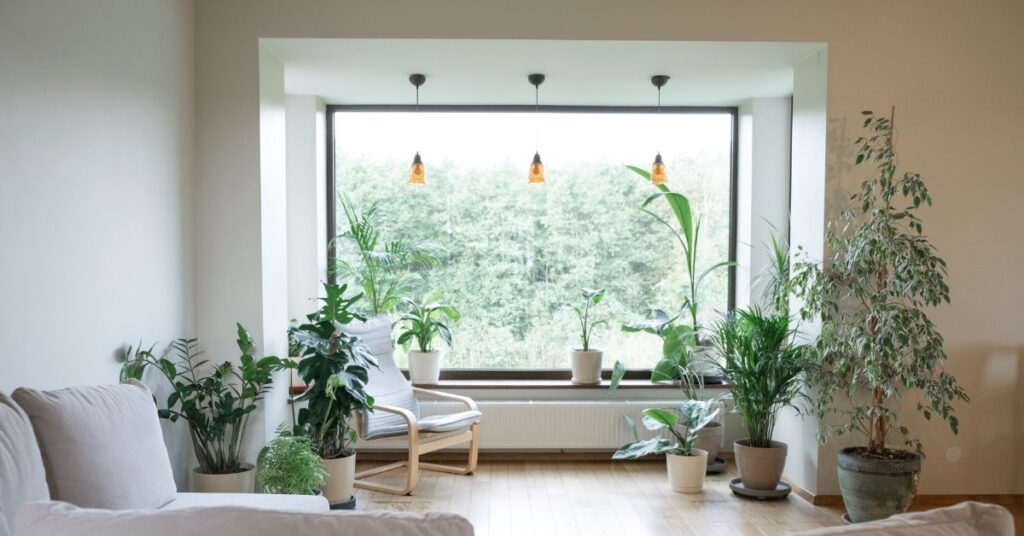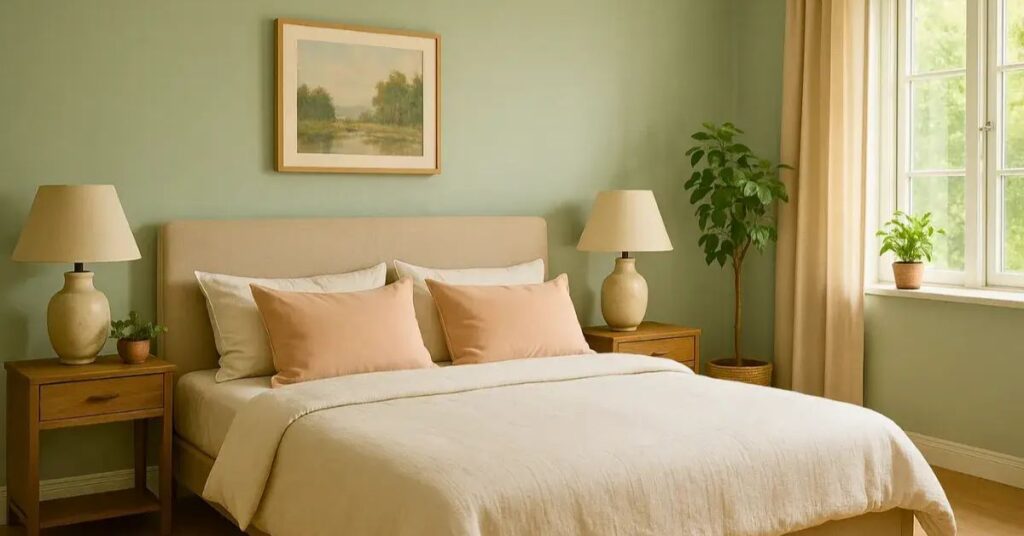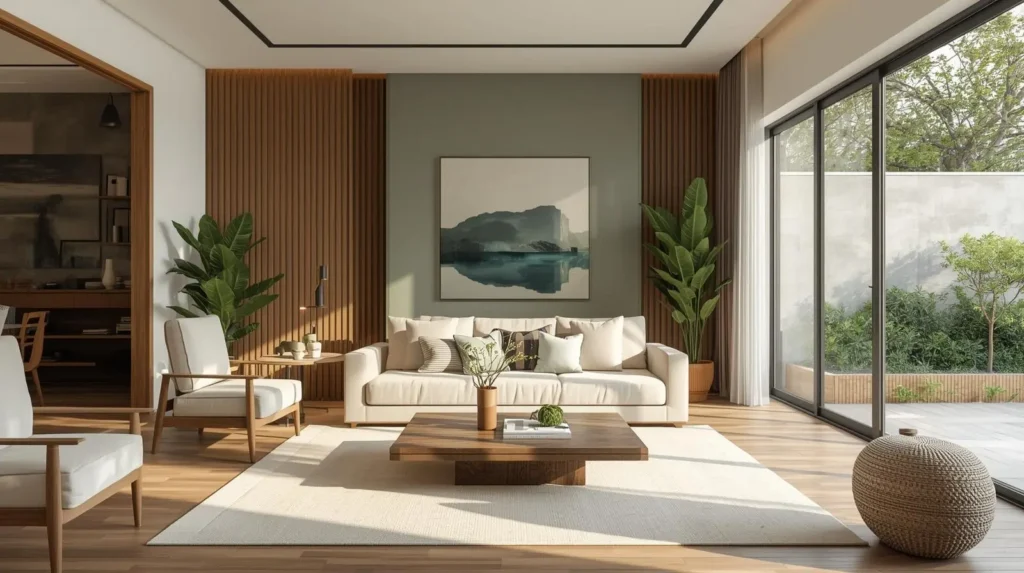When Home Becomes an Energy Vampire
Your living space profoundly influences your physical vitality, emotional state, and mental clarity. While a harmonious home acts as a sanctuary that restores and energizes you, a space with poor energy flow can subtly drain your life force, leaving you feeling inexplicably tired, stressed, or out of balance.
Unlike obvious problems such as broken appliances or structural damage, energy drains often operate below the threshold of conscious awareness. You might notice feeling more tired at home than elsewhere, experiencing unexplained mood shifts, or finding it difficult to relax in your own space without immediately connecting these symptoms to your environment.
The concept of environmental energy isn’t merely metaphysical—modern research in environmental psychology confirms that our surroundings significantly impact our stress levels, cognitive function, and overall well-being. Factors such as lighting, air quality, organization, and spatial arrangement all contribute to how energized or depleted we feel in our homes.
Recognizing these seven warning signs empowers you to identify specific areas where your home might be working against you rather than supporting your highest good. More importantly, each sign comes with practical solutions you can implement immediately to begin restoring positive energy flow throughout your living space.
Table of Contents

Sign 1: You Consistently Avoid Certain Rooms or Areas
When you find yourself unconsciously steering clear of particular spaces in your home, your intuition is likely detecting stagnant or negative energy. This avoidance behavior often manifests as consistently choosing alternative routes through your house, feeling reluctant to spend time in specific rooms, or experiencing subtle discomfort when you must enter these areas.
Why This Happens
Rooms that accumulate clutter, lack natural light, or contain items with negative associations can develop heavy, stagnant energy that feels unwelcoming. Your subconscious mind picks up on these energetic cues and naturally guides you away from spaces that don’t support your well-being.
Common culprits include basements filled with forgotten storage, guest rooms that have become dumping grounds for miscellaneous items, or any space associated with unpleasant memories or unfinished projects.
The Quick Fix
Begin by spending five minutes in the avoided space, simply observing what you notice. Does the air feel stagnant? Is the lighting inadequate? Are there items that trigger negative emotions or represent unfinished business?
Start with basic improvements: open windows to circulate fresh air, add lighting through lamps or by cleaning existing fixtures, and remove any obviously broken or unwanted items. Even these simple changes often shift the energy enough to make the space feel more welcoming.
For deeper transformation, consider what positive purpose this room could serve in your life and begin making small changes to support that vision.

Sign 2: You Struggle to Feel Truly Relaxed at Home
If your home feels more like a source of stress than a refuge, the environment itself may be overstimulating your nervous system. This manifests as difficulty unwinding after work, feeling restless even during leisure time, or experiencing a sense that you can never fully “turn off” while at home.
Understanding the Stress Response
Our nervous systems are constantly scanning our environment for safety cues. Cluttered spaces, harsh lighting, loud colors, or chaotic arrangements can trigger subtle stress responses that prevent deep relaxation. Additionally, homes filled with reminders of work, unfinished tasks, or obligations can keep your mind in an activated state.
Creating Calm Through Intention
Transform your living space into a true sanctuary by establishing clear boundaries between different types of activities. Designate specific areas for work, relaxation, and sleep, ensuring each space supports its intended function.
Introduce calming elements such as soft textures, warm lighting, and natural materials. Remove or relocate items that remind you of stress or obligations from your primary relaxation areas. Consider adding plants, which naturally improve air quality while bringing life energy into your space.
Pay particular attention to your bedroom, ensuring it contains only items that support rest and intimacy. Work materials, exercise equipment, and electronic devices can all interfere with your ability to achieve deep relaxation.

Sign 3: Sleep Quality Has Declined Without Obvious Cause
Your bedroom environment plays a crucial role in sleep quality, and subtle energy imbalances can significantly impact your rest. If you’re experiencing increased difficulty falling asleep, frequent waking, or feeling unrefreshed despite adequate sleep time, your sleeping space may need energetic attention.
Environmental Factors Affecting Sleep
Electronic devices emit electromagnetic fields that can interfere with your body’s natural rhythms. Mirrors reflecting your bed can create restless energy, while clutter under the bed or on nightstands can generate subconscious stress. Poor air circulation, inadequate darkness, or inappropriate room temperature also contribute to sleep disruption.
Optimizing Your Sleep Sanctuary
Remove all electronic devices from your bedroom or keep them at least six feet from your bed. Ensure your sleeping area is completely dark during sleep hours, using blackout curtains or eye masks if necessary.
Clear all clutter from under your bed and keep nightstands organized with only items that support rest. Position your bed so you can see the door while lying down but aren’t directly in line with it—this “command position” promotes a sense of security that supports deeper sleep.
Consider the energy of items in your bedroom. Remove anything associated with work, stress, or past relationships that no longer serve you. Your sleeping space should contain only objects that promote peace, rest, and positive relationships.

Sign 4: Family Conflicts or Tension Have Increased
When the energy in your home becomes imbalanced, it often manifests as increased irritability, arguments, or general tension among household members. While relationship dynamics are complex, environmental factors can significantly influence how family members interact with each other.
How Space Affects Relationships
Cramped quarters, lack of privacy, poor lighting, and cluttered common areas can all contribute to increased stress and shorter tempers. Additionally, if your home lacks spaces where family members can retreat for solitude, tensions may escalate more quickly and resolve more slowly.
Feng shui principles suggest that blocked pathways, broken items, and stagnant areas can create energetic friction that manifests in human relationships.
Harmonizing Family Energy
Create clear, unobstructed pathways through your home to allow energy to flow smoothly. Repair broken items promptly, as they can symbolically represent dysfunction in relationships.
Ensure each family member has access to personal space where they can retreat when needed. This might be a bedroom, a reading nook, or even just a comfortable chair that belongs specifically to them.
Pay attention to your main gathering areas, such as the living room and kitchen. These spaces should feel welcoming and comfortable for everyone, with adequate seating and good lighting that supports positive interaction.
Consider implementing regular family decluttering sessions where everyone participates in maintaining the energy of shared spaces. This collaborative approach often improves both the physical environment and family dynamics.

Sign 5: You Feel Heavy or Oppressed in Your Own Space
A sense of heaviness, oppression, or emotional weight in your home often indicates stagnant energy that needs clearing. This feeling might be subtle—a general sense that something is “off”—or more pronounced, such as feeling like you’re carrying an invisible burden while at home.
Recognizing Energetic Density
Stagnant energy often accumulates in corners, behind furniture, and in areas that don’t receive regular attention or cleaning. Homes that have witnessed significant stress, illness, or conflict may retain these energetic imprints long after the events have passed.
Additionally, holding onto possessions that carry negative associations or represent painful memories can create an overall sense of heaviness in your living space.
Clearing and Lightening Your Space
Begin with a thorough physical cleaning, paying special attention to corners, behind furniture, and areas that don’t receive regular attention. As you clean, set the intention to clear away not just physical dust but also stagnant energy.
Open all windows and doors to create cross-ventilation, allowing fresh air to circulate throughout your home. This simple act often provides immediate relief from heavy energy.
Consider which possessions in your home carry negative associations or painful memories. You don’t need to discard everything with difficult history, but be selective about what you choose to keep in your immediate living space.
For comprehensive guidance on energy clearing techniques that can transform the entire atmosphere of your home, explore our complete guide to energy cleansing. These time-tested methods can help you release stagnant energy and restore vitality to your living space.

Sign 6: Concentration and Productivity Suffer at Home
If you find it increasingly difficult to focus, think clearly, or accomplish tasks while at home, your environment may be creating cognitive overload. This is particularly relevant for those working from home, but it affects anyone trying to manage household tasks, creative projects, or personal goals.
Environmental Factors Affecting Focus
Visual clutter competes for your attention, making it harder to concentrate on specific tasks. Poor lighting strains your eyes and brain, while noise pollution from both inside and outside your home can fragment your attention.
Spaces that serve multiple purposes without clear boundaries can also create mental confusion, as your brain struggles to shift between different modes of thinking and activity.
Creating Clarity and Focus
Designate specific areas for different types of activities, even in small spaces. A particular chair might be for reading, while a cleared table becomes your workspace. These physical boundaries help your brain shift into appropriate mental states.
Minimize visual distractions in work and focus areas by storing items in closed containers or cabinets. Ensure adequate lighting for tasks, preferably combining natural light with appropriate artificial lighting.
Address noise issues through soft furnishings that absorb sound, background music that masks distracting noises, or noise-canceling solutions for particularly challenging environments.
Sign 7: Guests Seem Uncomfortable or Don’t Stay Long
Sometimes the clearest indication that your home’s energy needs attention comes from observing how others respond to your space. If guests consistently seem restless, leave earlier than expected, or make comments about feeling tired or uncomfortable, your home may be affecting them the same way it affects you.
Reading Social Cues
Pay attention to subtle signs: guests who remain standing rather than settling in, frequent glances at phones or watches, comments about feeling tired, or reluctance to accept invitations to visit. While individual preferences vary, patterns of discomfort among multiple visitors often indicate environmental issues.
Creating a Welcoming Atmosphere
Ensure your entryway is clean, well-lit, and free of obstacles. First impressions significantly influence how comfortable people feel in your space.
Check that your main gathering areas have comfortable seating arranged to facilitate conversation. Harsh lighting, uncomfortable furniture, or spaces that feel cramped can make guests feel unwelcome even when you’re being hospitable.
Consider the overall atmosphere of your home. Does it feel warm and inviting, or cold and sterile? Simple additions like soft lighting, comfortable textures, and pleasant scents can dramatically improve how others experience your space.

Taking Action: Your Energy Restoration Plan
Recognizing these signs is the first step toward creating a home that truly supports your well-being. Rather than feeling overwhelmed by multiple issues, choose one or two signs that resonate most strongly with your experience and begin there.
Immediate Steps You Can Take Today
Start with basic energy hygiene: open windows for fresh air circulation, clear obvious clutter from main living areas, and ensure adequate lighting in spaces where you spend the most time. These simple actions often provide immediate relief and create momentum for deeper changes.
Building Long-Term Harmony
As you address immediate concerns, consider how you want your home to feel and function. What activities do you want to support? How do you want to feel when you walk through your door each day? Let these intentions guide your ongoing improvements.
Remember that creating an energetically supportive home is an ongoing process rather than a one-time project. Regular attention to your space’s energy, combined with periodic deeper clearing and reorganization, will help maintain the positive changes you create.
Conclusion: Reclaiming Your Home’s Supportive Power
Your home should be your greatest ally in creating the life you desire—a space that restores your energy, supports your goals, and nurtures your well-being. When you recognize and address the signs that your space is working against you, you reclaim the power to create an environment that truly serves your highest good.
The seven signs explored here represent common ways that homes can drain rather than support their inhabitants. By addressing these issues with intention and care, you transform your living space from an energy vampire into a source of vitality and peace.
Small changes often create surprisingly significant shifts in how your home feels and functions. As you implement these improvements, pay attention to how your energy levels, mood, and overall well-being respond. Your increased vitality and peace of mind will confirm that you’re moving in the right direction.
Your home has the potential to be a powerful force for positive change in your life. By creating an environment that supports rather than drains your energy, you lay the foundation for greater success, deeper relationships, and enhanced well-being in every area of your life.
References
Mehta, Ravi, Rui (Juliet) Zhu, and Amar Cheema. “Is Noise Always Bad? Exploring the Effects of Ambient Noise on Creative Cognition.” Journal of Consumer Research, 2012.
McMahan, Elizabeth A., and David Estes. “The Effect of Contact with Natural Environments on Positive and Negative Affect.” Journal of Positive Psychology, 2015.
Environmental Protection Agency. “Indoor Air Quality and Student Performance.” https://www.epa.gov/indoor-air-quality-schools
Ulrich, Roger S. “Stress Recovery During Exposure to Natural and Urban Environments.” Journal of Environmental Psychology, 1991.
